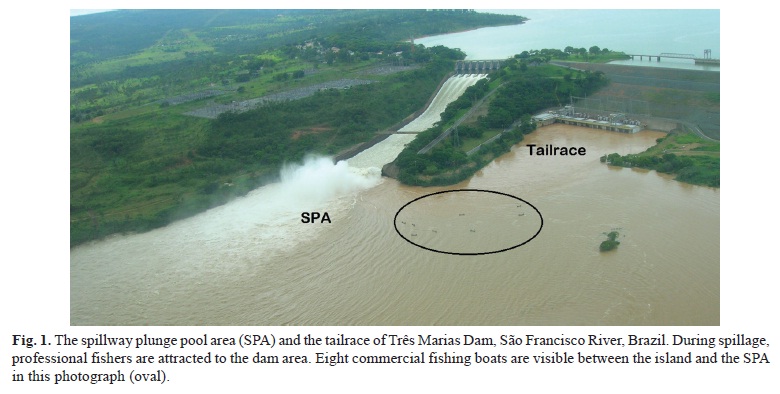Turbine dewatering and stop/startup may lead to the death of tons of fish at Brazilian power dams. The Três Marias Dam (TMD) on the São Francisco River has adopted two techniques to reduce the quantity of fish, mostly mandi (Pimelodus maculatus, Pimelodidae), affected by these maneuvers. They are: (i) spill before turbine dewatering to attract fish out of the tailrace, and (ii) fish screens in the stop log slots during turbine stop/startup to prevent fish from entering the draft tube. Here, we investigated whether spill and fish screens reduced the quantity of fish affected by turbine dewatering and stop/startup at TMD. We also determined whether the biomass of mandi trapped during turbine dewatering may be predicted by turbine discharge (Q) and/or catch per unit effort (CPUE) of mandis in the tailrace. Due to insufficient statistical power, our data were inconclusive as to whether spill attracted mandi out of the tailrace. We verified that the presence of fish screens significantly reduced the biomass of dead/moribund fish during turbine stop/startup. The biomass of mandis trapped in the draft tube during turbine dewatering was mainly influenced by Q (r² = 0.67), followed by CPUE (r² = 0.49). Since the trapped fish biomass correlated negatively with Q, we recommend that Q be maximized before turbine dewatering to reduce quantity of mandi trapped in the draft tube. The information presented here may be useful for reducing the quantity of fish affected by turbine maneuvers at TMD, as well as other dams.
Fish kill; Fish screen; Pimelodus maculatus; Turbine dewatering; Turbine stop







